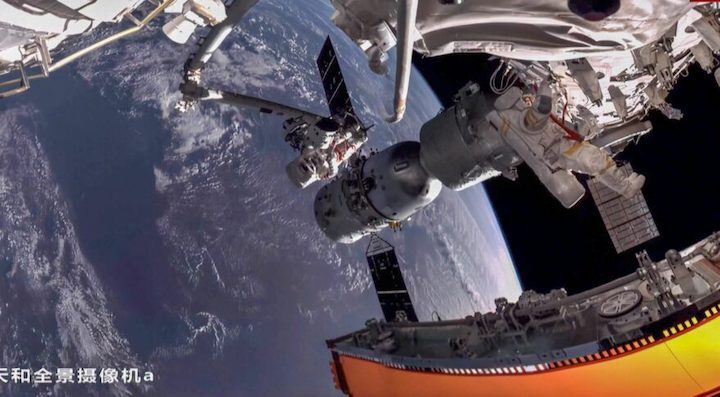24.05.2022 
Spaceflight, apart from exploring the unknown universe, can also help us, the inhabitants of Earth, to understand how gravity is affecting our brain in its visual perception.
Humans have evolved under the constant influence of gravity, though normally we don't notice it.
Human brains are selectively tuned to movement patterns initiated by living organisms like our peers, while turning the stimulus upside down can severely impede their detection and recognition.
However, to what extent and how such selective sensitivity is shaped by the Earth's gravitational field is still unexplored.
The researchers from the Chinese Academy of Sciences and China Astronaut Research and Training Center conducted a spaceflight experiment with Chinese astronauts during the country's Shenzhou manned flight missions.
They found that a prolonged period spent in microgravity diminished people's tendency to be highly sensitive to biological motion but less sensitive to its inverted counterpart.
In the experiment, six astronauts including two females were exposed to microgravity conditions for 13 or 15 days, and one male astronaut completed the tasks before, during and after the spaceflight, according to the study published recently in the journal Nature Communications.
The study reveals that for inverted stimuli, the response accuracy tends to increase during the flight and maintains at a relatively high level until half to one month after the flight while for upright stimuli, the accuracy declines slightly during spaceflight and returns to the normal level after the flight.
The findings suggest that the Earth's gravity plays a pivotal role in sustaining the visual system's orientation-dependent tuning to biological motion signals.
Also, the researchers conducted a ground-based spaceflight analog experiment, making a group of healthy participants complete similar tasks before, during, and after 45 days of six-degree head-down tilt bed rest. The results supported the findings from the space experiment.
They also administered the tasks among two ground-based control experiments, with one group isolated in a simulated space capsule for 30 days and the other in a regular lab environment.
It shows that non-gravity-related environmental factors cannot lead to a reduction of the inversion effect, according to the study.
However, such sensitivity changes are not recorded for face perception, meaning that even in microgravity, people are quicker to recognize upright faces than inverted ones. It highlights the particular role of gravity in regulating kinematic motion analysis.
The researchers suggested that throughout human beings' evolutionary history, they learned to utilize gravity for visual motion analysis of biological organisms and their own bodies.
When escaping from the Earth's gravity, people can recalibrate their brain connectivity to provide an adaptive mechanism that helps us better accommodate altered environments, said the researchers. Quelle: Xinhua
